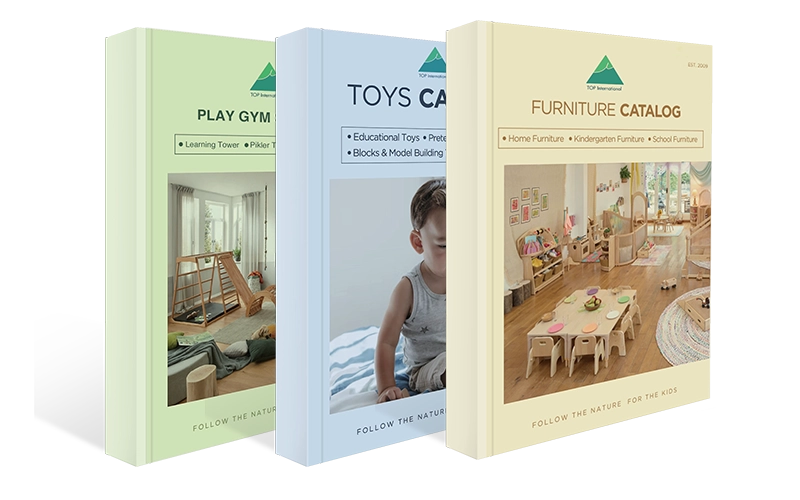Are you looking for ways to help your preschooler develop more potent physical and cognitive abilities? Perceptual motor skills are crucial for your child’s growth. They play a significant role in developing basic and complex skills for academic success and daily life. Are you wondering why your preschooler struggles with balance, coordination, or simple daily tasks? Do they have trouble sitting still, holding a pencil, or following instructions?
Improving perceptual motor skills can solve these challenges by enhancing physical coordination, sharpening focus, and supporting early learning development. These skills help children gain independence, perform better academically, and interact more confidently with their environment. When nurtured early, these abilities can prevent learning delays, reduce frustration, and promote a more enjoyable, successful preschool experience.
Absolutely! Perceptual and motor skills are essential in early childhood development. They are necessary for physical tasks, cognitive growth, and social interactions. Mastering these skills enables preschoolers to engage in various activities that shape their academic and emotional experiences.
1. What Are Perceptual Motor Skills?
Perceptual motor skills involve receiving, interpreting, and responding to sensory information through coordinated physical movements. These skills integrate sensory inputs—such as sight, sound, and touch—with motor output, including walking, catching, writing, or balancing. These skills are essential for preschoolers, forming the foundation for academic learning, social interaction, and everyday independence.
When children see a ball approaching them and instinctively raise their hands to catch it, they use perceptual and motor skills. Their eyes process the speed and direction of the ball, and their brain coordinates the appropriate muscular response. This synchronization of senses and movement is critical for physical activities and tasks like reading, where visual motor perceptual skills help track words across a page, or writing, which relies heavily on fine motor skills and visual guidance.
These skills evolve naturally through play and exploration, but can also be supported through intentional activities. Games that involve balance, hand-eye coordination, or spatial awareness, such as puzzles, obstacle courses, or ball games, are excellent perceptual motor skills activities. Strengthening these skills early helps children improve focus, build confidence, and adapt more easily to structured learning environments. Putting, understanding, and nurturing perceptual motor skills equips preschoolers with tools for lifelong success in both physical and academic pursuits.
2. The Science Behind Perceptual Motor Skills
Perceptual motor skills are not simply about physical movement. They represent a highly intricate network of neural processes, brain structures, and sensory feedback loops that shape a child’s ability to interact with their environment. These skills allow children to move purposefully, learn from movement, and adapt to physical challenges.
Understanding the neurological foundation of perceptual motor development is critical to early childhood education, therapeutic intervention, and informed parenting. Research has shown that the human brain undergoes substantial structural and functional changes during preschool. These changes are particularly pronounced in motor control, balance, and sensory integration.
Below, we explore the three most influential brain regions involved in developing perceptual motor skills: the cerebellum, the motor cortex, and the sensory cortex.
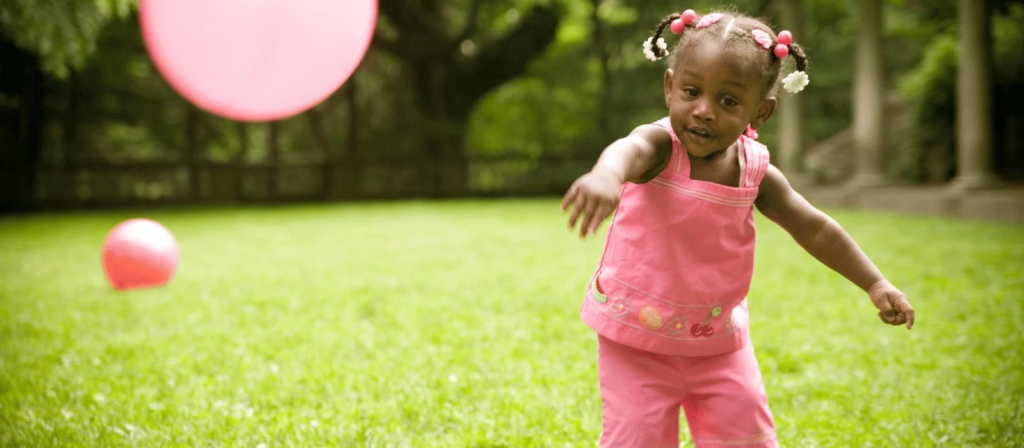
2.1 Cerebellum
The cerebellum, located at the base of the brain, plays a central role in motor control. While it does not initiate movement, it is crucial for coordination, precision, and accurate timing. The cerebellum receives information from the sensory systems, the spinal cord, and other brain parts, and integrates these inputs to fine-tune motor activity.
In preschoolers, the cerebellum supports:
- Balance and Posture: It helps children maintain equilibrium as they move, whether jumping, running, or sitting still. This is especially crucial in hopping on one foot or walking a balance beam, where even minor miscalculations can lead to falls or stumbles.
- Motor Learning: It plays a vital role in learning new movements. When a child first attempts to use scissors or knows how to throw a ball, the cerebellum adjusts their motor patterns with repeated practice, gradually leading to more fluid, efficient movements.
- Predictive Timing: The cerebellum helps children anticipate the timing of moving objects, such as catching a ball or jumping rope.
Developmental delays or underdevelopment in the cerebellum can result in clumsy movements, difficulty with rhythm, and problems with coordination. Children with these challenges may appear awkward or avoid physical activities due to fear of failure or embarrassment.
2.2 Motor Cortex
The motor cortex generates voluntary motor movements, particularly the primary motor cortex. Located in the frontal lobe, it sends signals to the body’s muscles, allowing a child to move intentionally.
For young children, the motor cortex is actively involved in:
- Initiating Movement: Whether a child raises their hand, throws a ball, or claps to music, the motor cortex is firing neural impulses to specific muscles, making those actions possible.
- Gross and Fine Motor Control: Larger body movements such as running or jumping rely on the gross motor areas, while intricate actions like buttoning a shirt or drawing require fine motor control, governed by different regions within the motor cortex.
- Skill Refinement: As children practice physical tasks, the motor cortex refines its control over muscles, improving precision. For example, early attempts at writing may be shaky, but with repetition, the motor cortex strengthens its neural pathways for smoother control.
This region is particularly plastic in early childhood, meaning it can adapt and change quickly in response to learning and environmental input. This neuroplasticity underscores the importance of providing diverse and repeated movement experiences during preschool.
2.3 Sensory Cortex
The sensory cortex, especially the somatosensory area in the parietal lobe, processes sensory information such as touch, temperature, pressure, and proprioception (the sense of body position).
In the context of perceptual motor skills, the sensory cortex:
- Translates Sensory Input into Action: When a child feels the texture of a puzzle piece or the weight of a ball, the sensory cortex interprets that data, allowing the brain to adjust motor output accordingly.
- Supports Proprioception: This internal sense helps a child know where their limbs are in space without looking. For example, reaching for a cup without knocking it over depends on accurate proprioceptive input and response.
- Enables Tactile Discrimination: Differentiating between surfaces, textures, or temperatures helps children interact safely and effectively with their environments.
Children with sensory processing issues may receive distorted information from their environment, leading to over- or under-reactions. A light touch may feel like a poke, or they may seem unaware when they bump into something. These inconsistencies can affect their confidence, self-regulating ability, and overall development.

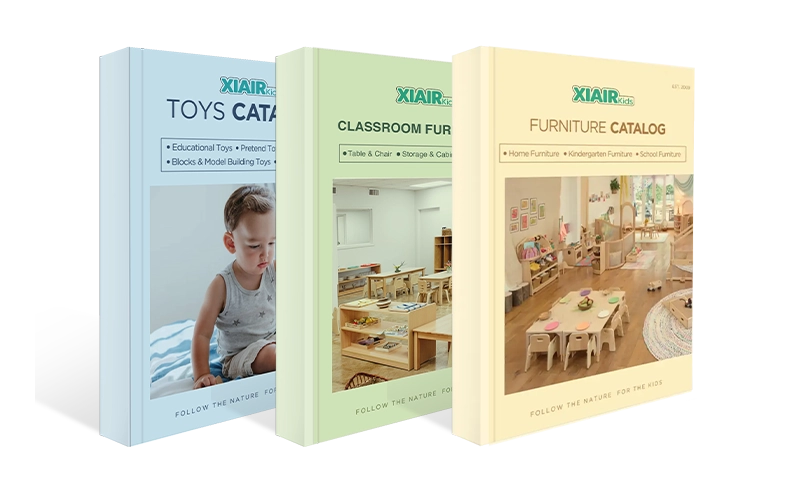
3. Why Is Perceptual Motor Skills Development Important?
Developing perceptual motor skills is vital for preschoolers because it lays the foundation for physical coordination, academic readiness, and social interaction. These skills help children process sensory information and translate it into purposeful movement, like writing, balancing, or following directions. Strong perceptual and motor skills enhance focus, boost confidence, and support independence in daily tasks. Children may struggle with learning, behavior, and basic motor functions without them. Early development ensures smoother transitions into structured learning environments and sets the stage for long-term success.
3.1 Types of Perceptual and Motor Skills
- Gross Motor Skills: These movements involve large muscle groups and help children with walking, jumping, and balancing activities. Gross motor skills are foundational for physical development.
- Fine Motor Skills: Fine motor skills are more minor, more precise movements involving the hands and fingers, such as picking up small objects, coloring, or holding a pencil.
Both motor and perceptual skills work together in everyday tasks. For example, when a child is running and catching a ball, they use visual motor perceptual and motor skills to complete the task. This is why preschoolers must practice both skills to support their development.

3.2 Foundation for Learning and Development
As children develop their perceptual motor skills, they lay the foundation for future academic and social success. Motor and perceptual skills help preschoolers focus, retain information, and process the world around them. For instance, writing requires a combination of visual motor coordination and fine motor skills. A child with better perceptual motor skills will be more adept at handling a pencil and understanding how to form letters and numbers.
These skills also contribute to the ability to solve problems, follow instructions, and engage in tasks that require concentration, which are all essential for academic success.
3.3 Active and Independent Living
Preschoolers who develop strong motor perceptual skills are better able to perform everyday tasks independently. Simple activities like dressing, brushing teeth, or feeding themselves require sensory perceptual motor skills and motor coordination. When a child learns to master these tasks, they gain confidence and a sense of autonomy, which is critical for their emotional well-being.
Independence in these daily tasks also fosters greater self-esteem and prepares children for more complex responsibilities as they grow older.

3.4 Brain Function and Skill Development
Engaging in activities that enhance perceptual motor skills can have a lasting impact on brain development. The brain constantly processes sensory input and directs motor actions, which strengthens neural connections and helps the brain grow. Activities that challenge a preschooler’s perceptual and motor skills lead to improved attention, memory, and problem-solving abilities.
Moreover, developing visual motor and visual perceptual skills can improve cognitive functions like reading, spatial awareness, and attention to detail, which are necessary for academic learning.
3.5 Complex Task Practice
Perceptual motor skills also serve as a practice ground for more complex tasks children will encounter later in life. Early practice with perceptual motor skills activities, such as balancing, drawing, or using scissors, helps children develop the necessary coordination for more challenging tasks. A preschooler who practices perceptual motor skills and movement concepts will find it easier to transition into structured school activities and sports later.
Mastering these fundamental skills also makes it easier for children to learn new tasks. Once children have developed the basic motor and perceptual skills needed for physical activities, they can move on to mastering other, more intricate skills.
3.6 Everyday Activities
Everyday activities—such as riding a bike, dressing, or stacking blocks—rely on perceptual motor skills. These skills are critical for functioning in the world around them. For instance, perceptual motor skills like balancing on one foot or jumping rope help preschoolers practice their physical coordination and spatial awareness.
As preschoolers practice these activities, they improve their motor abilities and build their confidence and independence. Perceptual motor skills and movement concepts are fundamental to navigating daily life.
3.7 Perception and Motor Skills
The connection between perception and motor skills is crucial for a preschooler’s overall development. Sensory perceptual motor skills allow children to use their senses to guide their physical movements. If a child has difficulty processing sensory input, it can lead to challenges in coordination and physical tasks.
Children can improve their sensory processing abilities and motor coordination by engaging in activities that strengthen this connection, such as fun activities for perceptual motor skills or examples of perceptual motor skills involving visual tracking or tactile play.

3.8 Participate in Group Play
Group play is a cornerstone of preschool education. Children learn to take turns, cooperate, and navigate social cues through movement-based activities. Playing tag, building a fort, or dancing to music involves perceptual motor engagement.
A child with well-developed perceptual motor skills can:
- Move confidently among peers without frequent collisions or hesitation.
- Read body language and anticipate the movements of others.
- Maintain spatial awareness while respecting personal space boundaries.
Children who struggle in this area may avoid physical play, become easily overwhelmed, or appear clumsy or socially withdrawn. This can lead to exclusion from peer interactions and missed opportunities to develop essential interpersonal skills.
In contrast, strong perceptual motor abilities help children:
- Engage fully in cooperative tasks like passing a ball or forming a circle.
- Adapt their physical responses to match the intensity of group activity.
- Feel more competent, increasing their desire to participate.
When preschoolers experience success in group play, it fosters not only motor development but also self-esteem, social bonding, and emotional regulation.
3.9 Follow Multi-Step Instructions
Preschoolers are often required to follow instructions involving cognitive processing and motor responses. For example, when a teacher says, “Pick up your crayons, walk to the bin, and place them inside,” the child must integrate auditory input with memory, spatial awareness, and body movement.
Perceptual motor skills are at the core of this integration. The child needs to:
- Hear and process each component of the command.
- Understand spatial terms such as “behind,” “under,” or “next to.”
- Execute fine and gross motor actions in the correct sequence.
Children with underdeveloped skills may lose track of steps, move inefficiently, or misinterpret directions. This can frustrate both the child and the adult and may lead to behavioral issues or a false perception of inattentiveness.
On the other hand, children with refined perceptual motor abilities can:
- Navigate sequences of tasks with greater ease.
- Coordinate their actions more efficiently.
- Develop a sense of independence in responding to classroom routines.
This skill is particularly critical as children transition into kindergarten, where classroom expectations become increasingly complex.

3.10 Transition Between Activities Smoothly
Transitions—shifting from one task or setting to another—are daily events in preschool classrooms. Whether moving from outdoor play to circle time or changing from a block-building activity to lunch, transitions require children to shift attention, change body orientation, and regulate their physical actions.
Perceptual motor skills support smooth transitions by helping the child:
- Sense changes in the environment through visual and auditory cues.
- Adjust body posture and movement direction without stumbling or crashing.
- Understand spatial organization to find where they’re supposed to go next quickly.
Without these abilities, transitions can feel chaotic. A child may bump into others, struggle to navigate around furniture, or become overwhelmed by the shift in sensory stimuli. Such struggles often result in meltdowns, delays, or resistance to change.
However, when perceptual motor skills are intact, transitions become opportunities for independence. Children learn to:
- Follow movement-based routines with minimal prompting.
- Regulate their body in dynamic settings.
- Adapt to shifting demands with flexibility and confidence.
Effective transitions help create a rhythm to the day that is predictable and calming, both for children and their caregivers.
3.11 Develop Handwriting Readiness
Handwriting is a complex skill that demands much more than the ability to hold a pencil. It requires fine motor precision, visual-motor coordination, postural control, and spatial awareness—all components of perceptual motor development.
Preschoolers with strong perceptual motor foundations are better prepared to:
- Use appropriate grip and pressure when writing or drawing.
- Align letters on a page with consistent spacing.
- Coordinate hand and eye movements for letter formation and tracking.
Children who lack these skills may struggle with pencil control, fatigue quickly during writing tasks, or develop poor habits that become difficult to correct later. They may also avoid drawing or writing altogether, leading to academic challenges.
By contrast, early development of perceptual motor skills promotes:
- Confidence in mark-making and early literacy activities.
- Efficient motor patterns that support neat and legible writing.
- A sense of pride and ownership over their work.
Supporting handwriting readiness through perceptual motor development helps children meet academic benchmarks and enjoy learning to write.
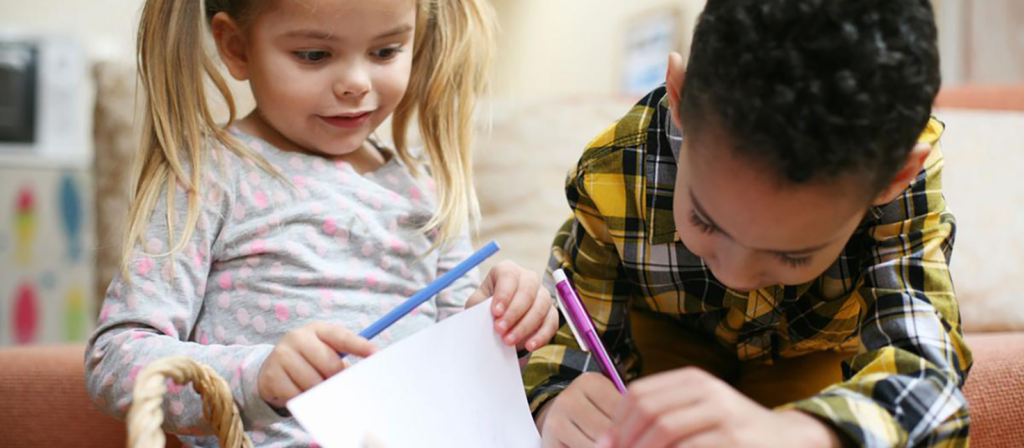
3.12 Navigate Physical Environments Safely
A preschooler’s day includes navigating hallways, climbing playground structures, stepping over objects, and exploring new spaces. Each of these actions depends on perceptual motor abilities.
For safe navigation, children need to:
- Judge distances and avoid obstacles.
- Adjust speed and direction based on terrain or surroundings.
- Maintain balance and orientation in dynamic environments.
When perceptual motor skills are weak, children may appear clumsy, have frequent accidents, or show anxiety in new settings. These issues can lead to reduced physical activity, increased adult intervention, and heightened frustration.
In contrast, children with strong skills can:
- Move through varied environments with independence and safety.
- Participate more fully in physical education and outdoor play.
- Gain physical confidence that transfers into other areas of learning.
Exploring environments safely also encourages curiosity, risk-taking, and a love of movement—all critical elements of holistic development.

4. How to Encourage Perceptual Motor Skill Development in Preschoolers?
Supporting perceptual motor skills development can be done through structured and unstructured activities. Here are some ways to nurture these skills in preschoolers:
4.1 Perceptual Motor Skills Program
A structured perceptual motor skills program can give preschoolers the necessary activities and exercises to strengthen their coordination. These programs often include gross and fine motor exercises and can be adapted based on the child’s developmental level.
4.2 Perceptual Motor Skills Activities
Incorporating fun and engaging activities into daily routines is a great way to support development. Simple activities like:
- Ball games (for gross motor skills)
- Puzzles and drawing (for fine motor skills)
- Obstacle courses (for coordination)
These perceptual motor skills activities build physical strength and coordination and enhance cognitive skills, such as problem-solving and memory.
4.3 Fun Activities for Perceptual Motor Skills
Make the development of motor perceptual skills fun! Activities like dancing, jumping on a trampoline, or playing interactive games help children enjoy physical exercise while developing critical coordination and sensory skills. The more fun they have, the more likely they will engage with these activities and develop stronger skills over time.
5. Examples of Perceptual Motor Skills Activities for Preschoolers
Perceptual motor skills are essential for preschoolers as they lay the groundwork for physical coordination, cognitive growth, and emotional development. By engaging in various perceptual motor skills activities, preschoolers can build their abilities to process sensory information and respond with coordinated physical movements. These activities cover many skills, from essential balance to advanced spatial awareness.
What examples of perceptual motor skills activities can be integrated into a preschooler’s routine?
The activities that help develop perceptual motor skills can be divided into categories: gross motor, fine motor, body awareness, and more. Below, we summarize these categories, offering practical examples of each activity that will help preschoolers build their coordination and cognitive abilities.
5.1 Gross Motor Activities
Gross motor activities focus on larger muscle groups and help children with large movements, like running, jumping, or climbing. These activities support the development of strength, coordination, and balance.
Examples of Gross Motor Activities
- Running Races: Encourage children to run short races inside or outdoors. Change the terrain to add variety, such as running up a slight hill or around cones.
- Jumping Jacks: A great way to develop leg and arm coordination, jumping jacks also help with cardiovascular health and motor coordination.
- Kicking a Ball: Set up targets or challenges where children can kick a ball to hit a specific spot or score a “goal.” This helps strengthen leg muscles while practicing eye-foot coordination.
- Hopping: Mark out squares or circles on the ground to create a hopping game. Children can hop from one square to another, developing leg strength and balance.
These gross motor activities help develop the strength and coordination needed for physical tasks like walking, running, and jumping. These activities also enhance sensory processing, which is key for later academic and physical skills.

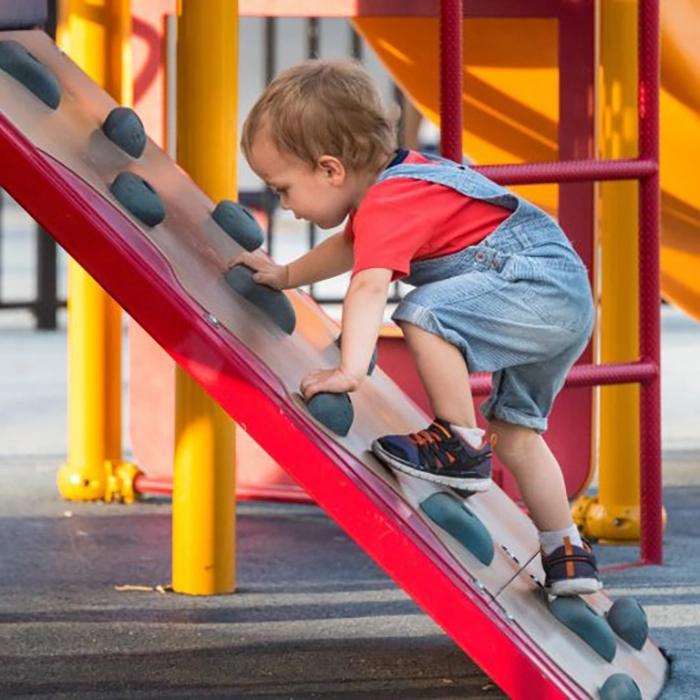
5.2 Fine Motor Activities
Fine motor activities target the smaller muscles in the hands and fingers, which are vital for writing, drawing, and eating tasks. These activities require precision and control, helping children improve their dexterity and hand-eye coordination.
Examples of Fine Motor Activities
- Drawing and Coloring: Provide your child with crayons, markers, and coloring books to help develop visual motor perceptual skills. As they draw shapes, they practice hand control and eye-hand coordination.
- Building with Blocks: Activities like stacking blocks or assembling simple structures help children practice visual perceptual skills and strengthen hand coordination.
- Using Scissors: Let children practice cutting paper with safety scissors. Cutting straight lines or shapes helps them develop fine motor control and focus.
- Beading or Lacing: Threading beads onto strings or lacing through holes in cards is another excellent activity for improving hand-eye coordination and fine motor skills.
These activities encourage fine motor development, a crucial component of early childhood learning. As preschoolers develop perceptual motor skills, they improve their ability to perform more complex tasks, such as writing or using utensils.

5.3 Body Awareness Activities
Body awareness is the understanding of how the body moves in space and how different body parts coordinate. These activities help preschoolers develop awareness of their bodies and how to control them.
Examples of Body Awareness Activities
- Simon Says: This classic game is perfect for promoting body awareness. It requires children to follow specific body movements, which helps them develop control over their actions and understand how their bodies function in space.
- Animal Walks: Ask children to move like different animals, such as hopping like a frog, slithering like a snake, or waddling like a penguin. These activities enhance both motor coordination and body awareness.
- Yoga for Kids: Simple poses such as “tree” and “downward dog” help children understand how their bodies move and strengthen flexibility, balance, and control.
- Balloon Tossing: Tossing a balloon in the air while trying to keep it from touching the ground helps children learn how to move their bodies in response to external objects.
These body awareness activities are foundational for controlling movements and improving coordination. Understanding how to move their bodies in space helps children develop motor skills and physical confidence.
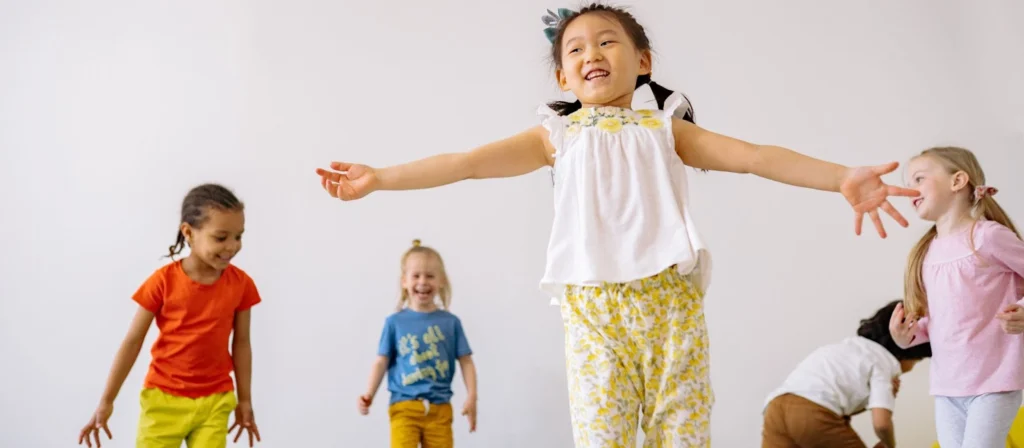
5.4 Spatial Awareness Activities
Spatial awareness is understanding how objects and people relate to each other in space. Developing spatial awareness is crucial for preschoolers, as it lays the foundation for later academic skills such as reading and math.
Examples of Spatial Awareness Activities
- Obstacle Courses: Create an obstacle course with various objects that children need to navigate. Children practice spatial awareness by understanding the distance between themselves and objects as they weave through cones, crawl under tables, or jump over pillows.
- Treasure Hunts: Set up a scavenger hunt where children have to find hidden objects based on clues. These types of games help children practice spatial awareness by navigating their environment.
- Box Navigation: Use large boxes that children can crawl through, climb over, or navigate around. This helps children become aware of their body’s positioning in space and improves their ability to move through physical space.
Spatial awareness is a key component of perceptual motor skills. It helps children understand how they move about their surroundings and enhances their ability to engage in more complex tasks.
5.5 Directional Awareness Activities
Directional awareness is understanding left, right, up, down, forward, and backward directions. These skills are essential for following instructions and coordinating physical movements.
Examples of Directional Awareness Activities
- Following Directions: Give children simple directional instructions, such as “Jump to the left,” “Clap your hands above your head,” or “Walk to the right.” These exercises help children practice listening and following directions while developing perceptual motor skills.
- Hopscotch: Playing hopscotch helps children understand and follow directional cues, such as “jump forward,” “turn around,” or “step to the right.”
- Dance Moves: Play a game where children mimic your dance moves or follow directional movements such as turning left, bending down, or stepping forward.
Directional awareness activities help children develop the skills to follow directions and engage in more complex tasks later.
5.6 Integration Activities
Integration activities are a fantastic way to combine multiple perceptual motor skills in a single task. These activities challenge preschoolers to coordinate fine and gross motor movements while integrating sensory input. By practicing these activities, children strengthen their ability to perform complex tasks that require various skills, working together.
Examples of Integration Activities
- Balloon Volleyball: Use a balloon to create a simple game of volleyball. Children must hit the balloon repeatedly while staying within a designated area. This activity encourages visual motor perceptual skills as children track the balloon, adjust their movements accordingly, and use both hands to make controlled hits.
- Building Towers with Blocks: Have children use building blocks to create tall towers. As they stack the blocks, they practice fine and gross motor skills, as they need to carefully adjust each block’s placement while also managing the physical task of lifting and balancing. This activity also integrates spatial awareness as it determines where each piece fits.
- Obstacle Courses with Multiple Challenges: Set an obstacle course where children need to crawl, jump, balance, and pick up objects. This can include jumping over cushions, weaving through cones, or climbing under tables. Such courses challenge gross motor skills (like jumping and crawling) and fine motor skills (like picking up objects), integrating sensory processing with physical actions.
Integration activities are great because they require children to think on their feet and adapt their movements according to various sensory cues. As children engage in these tasks, they practice combining sensory information with physical movements, which ultimately enhances their overall coordination and motor development.


5.7 Balance Activities
Balance is one of the most fundamental perceptual motor skills that preschoolers develop, as it forms the foundation for their physical coordination. Activities focusing on balance improve stability, strength, coordination, and spatial awareness. These skills are vital as they support more complex physical tasks, like running, jumping, and writing.
Examples of Balance Activities
- Walking on a Line: A simple but effective balance activity involves having children walk along a straight line, such as a piece of tape on the floor. This activity challenges their ability to maintain equilibrium while moving forward. To add variety, ask them to walk backward or balance on one foot as they walk along the line, gradually increasing the difficulty level.
- Balance Beam Practice: Whether you use a commercial balance beam or a homemade version with a strip of tape on the floor, this activity helps preschoolers develop fine-tuned balance and coordination. They can practice walking across the beam, strengthening core muscles, and improving their focus.
- Balancing Objects: Challenge children to balance objects, such as a bean bag or a small ball, on their heads while walking or standing. This activity encourages body control and helps children develop their ability to focus on maintaining balance.
- One-Legged Stand: Ask children to stand on one leg and hold the position for a few seconds. You can make this more fun by asking them to “pretend” to be different animals, like flamingos or storks. Over time, this builds muscle strength and improves stability.
Like these examples, balance activities enhance perceptual motor skills and help children gain confidence in their physical abilities. The more they practice maintaining balance, the more control they develop over their bodies, which can transfer to other tasks like jumping, running, and even learning to write.

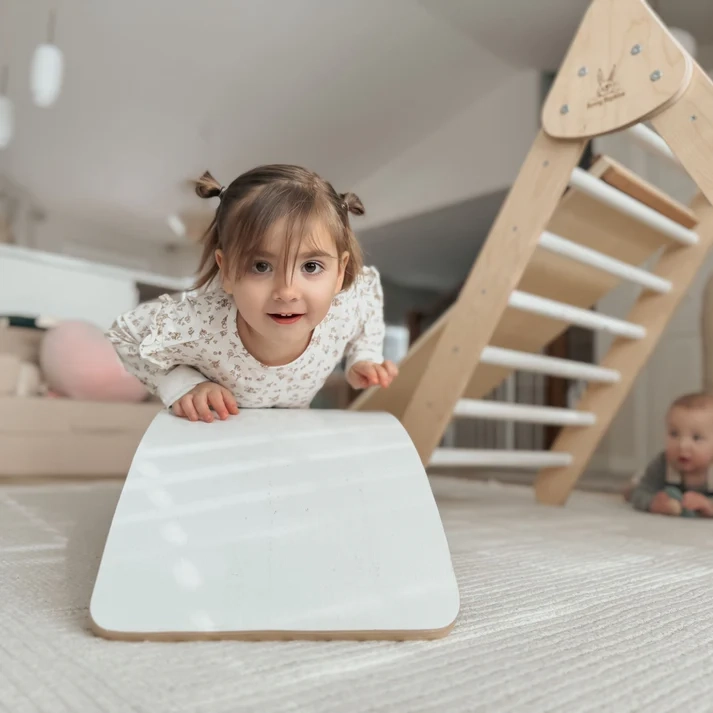
5.8 Expressive Activities
Expressive activities help preschoolers use their bodies to convey emotions, ideas, or stories. These activities enhance perceptual motor skills, such as coordination and balance, and encourage emotional expression and creativity.
Examples of Expressive Activities
- Dance and Movement: Let children move freely to music, encouraging them to express emotions such as happiness, excitement, or sadness through their movements. Dance provides an opportunity to enhance gross motor skills and body awareness while allowing preschoolers to experiment with rhythm, timing, and coordination. You can add challenges like freeze dances or follow-the-leader movements to make it more interactive.
- Role-Playing: Role-playing activities let children use their imagination and physical movements to take on different characters or act out various scenarios. Whether they are pretending to be animals, superheroes, or everyday people, role play helps them use their bodies to express different roles and emotions. This type of play encourages body awareness, balance, and fine motor skills as they engage in movements and gestures associated with their roles.
- Pantomime Games: In these games, children can act out different emotions or actions without speaking, relying solely on their body language to communicate. For instance, you could ask a child to pantomime “eating an ice cream cone” or “climbing a mountain.” These activities help children use their bodies creatively while also improving visual motor perceptual skills and spatial awareness.
These expressive activities allow children to explore emotions and ideas while developing motor and perceptual skills in fun and creative ways.

6. Which Skill Is an Example of a Perceptual Motor Skill?
Perceptual motor skills are the ability to integrate sensory input and motor responses to perform tasks that require coordination. These skills are critical for various activities, from academic functions like writing to physical activities like sports.
6.1 Perceptual Motor Skills and Movement Concepts
Understanding how perceptual and motor skills interact with movement concepts is key to supporting a preschooler’s development. These movement concepts encompass understanding spatial relations, directional movements, balance, and timing, all of which help children make sense of their physical environment.
Perceptual and Motor Skills Impact Factor
The development of perceptual motor skills directly impacts a child’s ability to move effectively and understand their physical world. For example, preschoolers with strong perceptual motor skills can more easily follow instructions like “run forward” or “jump up” as they have mastered the coordination of sensory input and motor action.
Perceptual Motor Skills and Movement Concepts Examples
Some activities that incorporate perceptual motor skills and movement concepts include following complex directions in dance, moving through obstacle courses, or participating in group sports. These activities require children to adjust their movements based on sensory feedback, enhancing their perceptual motor coordination.

6.2 Developing Ocular Motor and Visual Perceptual Skills
Ocular motor and visual perceptual skills are essential for the eyes to track, focus, and interpret visual information. These skills support reading, writing, hand-eye coordination, and spatial awareness—core components of early learning. Strengthening them in preschoolers helps improve attention, visual memory, and the ability to recognize patterns or letters. Activities like tracing, mazes, and visual matching games effectively promote development. By focusing on these foundational visual motor and visual perceptual skills, children build the visual efficiency needed for academic and everyday success. Consistent practice boosts school readiness and enhances confidence in physical and classroom tasks.

7. Differences in Perceptual Motor Skill between Infants, Toddlers, and Preschoolers
| Aspect | Infants (0–12 months) | Toddlers (1–3 years) | Preschoolers (3–5 years) |
|---|---|---|---|
| Gross Motor Skills | Start walking, climbing, running, pushing, and pulling toys | Improve coordination in running, jumping, hopping, and balancing | Grasping objects, reaching, and hand-to-mouth movement |
| Fine Motor Skills | Scribbling, stacking blocks, and using spoons | Drawing shapes, using scissors, and completing puzzles | Respond to light, sound, and texture passively |
| Visual Motor Integration | Tracking faces/toys, recognizing contrast | Improved hand-eye coordination through simple play | Precise visual tracking and motor control for drawing/writing tasks |
| Sensory Processing | Can follow complex movement directions, and improved body control | Active exploration using all senses | Use sensory cues to guide purposeful movement |
| Body Awareness | Limited to spontaneous movement and reflexes | Understand body parts, mimic gestures | Can follow complex movement directions, and has improved body control |
| Spatial Awareness | Minimal; start recognizing caregivers’ distance | Begin navigating space, avoiding obstacles | Navigate environments confidently with improved spatial judgment |
| Directional Awareness | Absent; movement is reactive | Begin understanding in/out, up/down | Understand left/right, forward/backward in structured tasks |
| Motor Planning | Primitive; trial-and-error movement | Basic planning, trial strategies during play | Intentional actions with goal-directed movement |
FAQs
1. What are perceptual motor skills in simple terms?
Perceptual motor skills involve interpreting sensory information and responding with coordinated physical movements. They are crucial for both cognitive development and physical tasks.
2. How can I improve my preschooler’s motor perceptual skills?
Encourage activities such as drawing, running, jumping, and playing games that require physical coordination and sensory processing to improve perceptual motor skills.
3. Why are perceptual motor skills necessary for preschoolers?
Perceptual motor skills are essential for academic learning, physical health, and emotional development. They help children perform tasks like writing, reading, and engaging in social activities.
4. What are some examples of perceptual motor skills for preschoolers?
Examples include running, jumping, drawing, catching a ball, and completing puzzles. These activities help preschoolers develop both visual motor and visual perceptual skills.
5. How can I help my child develop perceptual motor skills and movement concepts?
Incorporate activities that challenge both sensory processing and physical movement, such as building with blocks, playing ball games, or engaging in obstacle courses.
6. What is the best way to implement a perceptual motor skills program at home?
To enhance perceptual motor skills, create a structured routine including indoor and outdoor physical activities, such as dancing, running, and building.
Conclusion:
Incorporating perceptual motor skills activities into a preschooler’s routine is essential for fostering well-rounded development. Activities like balance exercises, integration tasks, and expressive activities enhance physical coordination and improve cognitive abilities such as spatial awareness, body control, and emotional expression. Preschoolers strengthen fine and gross motor skills by engaging in diverse activities, boosting creativity and confidence. The more these activities are integrated into daily routines, the better children will develop the foundational skills for academic success, social interactions, and overall well-being. These early experiences play a key role in preparing children for more complex tasks as they grow.








